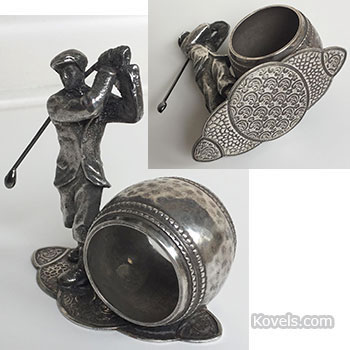Many holiday dinner tables will be enhanced by whimsical napkin rings for family and guests to admire. If the host is lucky, those holders will be silver heirlooms, found at their family’s feasts for generations.
The napkin ring was used to identify the dirty napkins of household members between weekly wash days. They first appeared in France about 1800 and soon spread to many countries. Most 19th century rings were made of sterling silver or silver plate, but many were made of bone, wood, pearl, embroidery, porcelain, glass, or even Bakelite in the 20th century.
Collectors catching the silver napkin ring bug should learn the clues to determine genuine items from reproductions. Most figural napkin ring reproductions are silver plate, but not as well made as Victorian examples. Reproductions are noticeably heavier than old rings. There are almost no sports-related original rings. We have seen fakes with people playing golf, tennis or other sports. A few originals show hoop rolling and fishing.
Bases on originals are geometric or feature realistic leaf designs. Highly collectible Kate Greenaway rings rarely had a base. Original napkin rings that showed a child driving a cart or wagon had no base. The ring was pushed across the table on turning wheels.
Fake rings have solid bases and may have blurred company marks because the marks are die-stamped, not cast. Some fake marks are actually copies or simply made up. Some reproductions, purchased in the 1960s, have impressed designs on the bottom of the base.
Manufacturers marks copied on fakes include Meriden, Simpson, Hall, Miller & Co., and the Middletown Plate Co.
Pictured is a reproduction napkin ring, 8 inches high. Notice the sports theme, strange base shape and the impressed design on the bottom of the base. These are all signs it is a reproduction.




Leave a Reply
You must be logged in to post a comment.